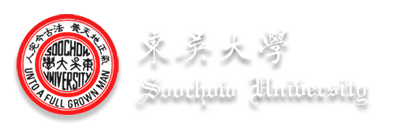Located next to the Chiang Kai-shek Memorial Hall Station on the MRT Red Line is the Chiang Kai-shek Memorial Hall. This grandiose monument to Chiang Kai-shek was constructed to honor the former ruler after his death in 1975. The memorial is built in a very wide open area in the middle of the bustling city of Taipei. The plaza, renamed Liberty Square in 2007, has been a popular area for public gatherings since its construction due to its large open area and cultural significance. Contained in this plaza are also the National Theater and National Concert Hall. The Memorial Hall itself is a raised white building with a blue roof reminiscent of traditional Chinese architecture with a single Republic of China flag roughly 100 meters in front of the building itself.
After traveling up a long staircase, onlookers are greeted with an enormous bronze statue of Chiang Kai-shek. Chiang’s depiction in this area is almost god-like, with the massive statue towering over all visitors. The statue is flanked from both sides with large ROC flags that bear the Kuomintang emblem, a remnant of the era in Taiwan where the line between the KMT party and the state was blurred. The floor is stone-fitted with a red carpet that lines the walkway up to the statue. The site reflects the fanatical devotion that many in Taiwan felt towards Chiang Kai-shek and clearly shows the strength of Chiang’s cult of personality that was constructed during his rule.
What once was a place that all Taiwanese would visit to pay their respects to Chiang has recently become somewhat controversial over the past few decades, especially since the end of martial law. For some Taiwanese citizens, the memorial perpetuates the legacy of authoritarianism in Taiwan. However, for many, Chiang Kai-shek is still the savior of Taiwan who fought the Japanese in World War II and prevented a communist takeover. As a consequence of this discourse, we observed very interesting aspects and exhibits located at Chiang Kai-shek memorial hall. In the statue room, there is a staircase that leads to the inside of the memorial. This area houses a plethora of exhibitions that not only display historical artifacts relating to Chiang but also exhibitions about Taiwan’s road to democracy and the legacy of authoritarianism. One exhibit outlines Taiwan’s path to freedom of speech and the progress the nation made toward liberal democracy in the post-Chiang Kai-shek era. The duality of Chiang’s depiction in this memorial is very interesting.
The memorial is free for all to visit and is extremely accessible via public transportation, so much so that it has its own dedicated MRT station. While our initial impression of the memorial was that it was inaccessible due to the large staircase, there exists two side entrances at ground level on either side of the memorial. Inside these entrances are elevators that will take you to all exhibits inside the memorial along with the statue itself.
Our Thoughts
The large open space in the Memorial Hall implants in your mind how impactful Chiang Kai-shek is. That was further amplified when we were walking towards the main hall, as it looks so large yet took a while to actually get to it by walking. The statue itself is very imposing, and the view at the top of the hall makes for great pictures. We like that there is a museum underneath the hall which shows parts of Chiang Kai-shek but also demonstrates his controversy, although it was a little unclear that there was a museum.
Questions to Consider
With the ongoing controversy around Chiang Kai-shek, should his statue in the main hall be removed?
Is the hall and open space a good representation and facet of Taiwanese culture?
